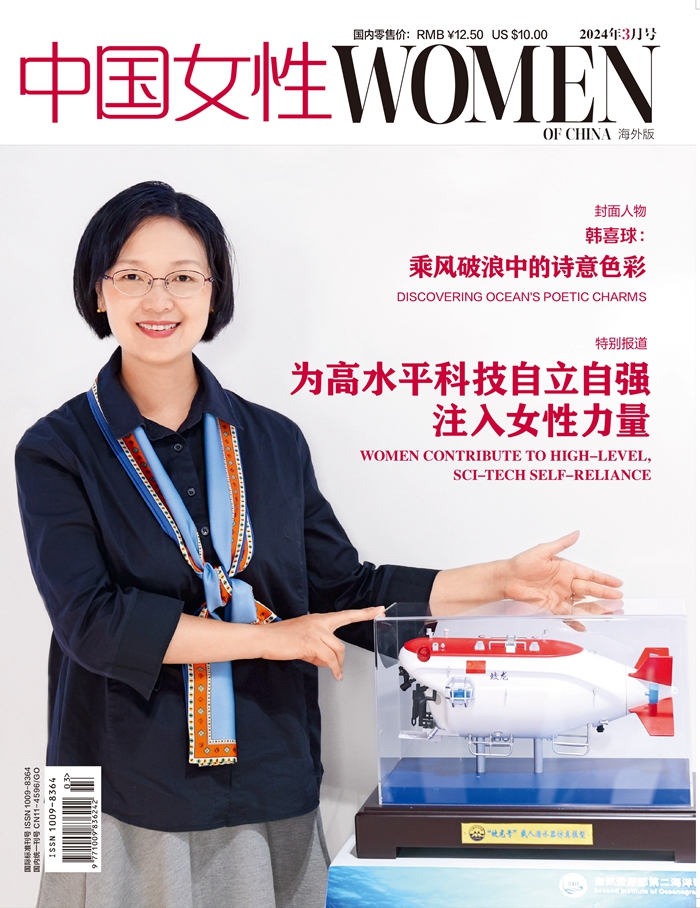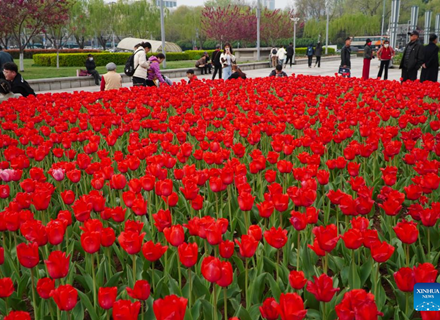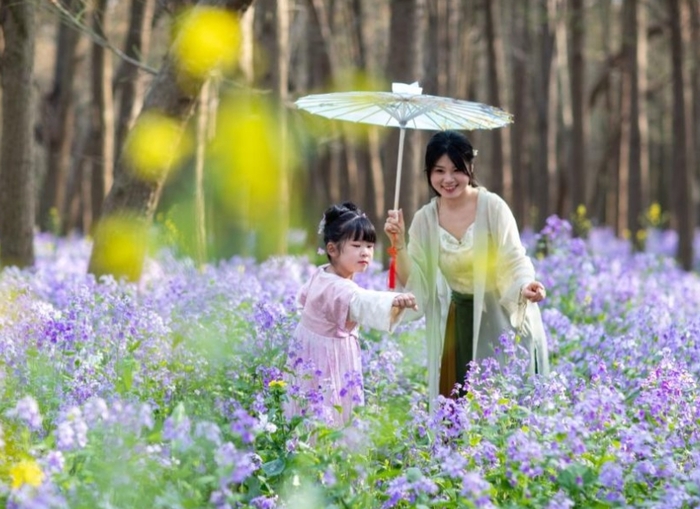Tradition Blooms with Games Bouquets
"When I was interviewed two years ago, I said I hoped our flowers would go international. At that time, I could never have imagined that wish would actually come true two years later," said Li Meili, a 70-year-old Shanghai grandmother whose traditional wool-knit bouquets are set to light up Beijing 2022.
Li's dream was officially realized on Dec 31, when the Beijing Organizing Committee for the 2022 Olympic and Paralympic Winter Games (BOCOG) announced that her crocheted wool bouquets would be presented to medalists at the Games, in lieu of the usual fresh flowers.
Officially referred to as "an inheritor of the intangible cultural heritage of the Shanghai wool-knitting technique", Li has been recruited by Hengyuanxiang Group (HYX), a Beijing 2022 sponsor which will supply the bouquets. Li is overseeing personnel training, quality control and final assembly of the bouquets for the company, which was established in 1927 and has kept the Shanghai wool-knitting technique alive through the decades.
"We used to provide ceremonial costumes mainly for Chinese sports delegations at Olympic Games," said Gu Honglei, Party secretary of HYX, which specializes in knitting, clothing and wool.
"We have been thinking about how to use the traditional technique to make further contributions to the Games. After considering many ideas, we found a pain point of previous Olympic Games, that is the fresh flower bouquets," Gu added.
"Since medalists receive fresh flowers as a symbol of their most glorious moment, we thought it would be better if the flowers didn't wither but instead maintained their glory as crocheted wool flowers."
The Winter Games bouquets consist of seven kinds of "flowers" and feature a bow ribbon on the handle with the words "Beijing 2022".
"The rose stands for friendship, the Chinese rose for perseverance, the lily of the valley for happiness, the hydrangea for unity, the laurel for victory, the sweet osmanthus for harvest, and the olive for peace," explained Gu.
She added that the bouquet for the Paralympic Games will also feature the calliopsis, which symbolizes freedom and eternal happiness.
According to Gu, a total of 1,251 bouquets will be required for the upcoming Games, consisting of almost 17,000 flowers. Since each flower has leaves and is entirely handmade, the production process is intricate, labor-intensive and time-consuming.
"It takes 20 minutes to knit a rose petal, and different flowers require different techniques. It takes up to 35 hours to complete one bouquet, and nearly 50,000 hours to finish all bouquets," said Li, a major director of the bouquets project.
According to Li, knitting associations across seven different cities and provinces, including Beijing, Shanghai, Tianjin, Jiangsu, and Zhejiang, have participated in the bouquet crocheting, with additional support from organizations such as the All-China Women's Federation.
The bouquets for the Paralympic Winter Games will be mainly completed by the China Foundation for Disabled Persons, with Li offering guidance through videos and online classes.
Each association is responsible for making one or two kinds of flowers, before being shipped to the headquarters of HYX in Shanghai for final assembly.
"There were many problems with the flowers at the beginning, and some needed to be untied and redone. However, after a lot of trial and error, we can now produce flowers of the highest quality, and I am very grateful to the craftsmen and women across the country," said Li.
Li's team prepared for production for several months before being officially announced as the suppliers. After three months of revising the draft design, followed by five months of training, knitting, and packaging, the woolen flowers will be in full bloom this winter.
The bouquets will greatly reduce the cost of transportation and management of fresh flowers and are convenient for athletes to carry home and keep for a long time, according to BOCOG.
As a traditional technique with almost 100 years of history, Shanghai-style knitting was first introduced to China's coastal cities by foreign travelers. It was commonly used for knitting sweaters, scarves, and hats, according to Li.
The wool-knit flower has been one of HYX's most popular products, since being developed by the company two decades ago.
"At that time, HYX had thousands of stores and we made wool flowers for each store every year," Li said. "When customers see the flower, they know that this is HYX's franchise store, serving as an anti-counterfeiting logo.
"The home textile and clothing companies belonging to HYX also use wool flowers to make brooches and decorations, as a way to increase sales."
Li claimed that many of the crocheted flowers on the market use thick cotton or wool thread, which is easier to manufacture but lacks the detail of HYX's products.
"We only use fine wool thread. Although it requires more time and effort, the crocheted work is more exquisite and realistic," she said.
Shanghai wool knitting remains extremely popular with the public, with HYX offering training courses to meet the demand.
"Places on these courses are usually snapped up within three minutes of being announced. Those who sign up range from young white-collar workers to the elderly, and a one-hour class tends to last for two to three hours because people are so enthusiastic," Li said.
"Because manual knitting is more special and individual than machine-produced items, some patterns and decorations can only be completed by hand through this intangible cultural heritage technique."
(Source: chinadaily.com.cn)
Please understand that womenofchina.cn,a non-profit, information-communication website, cannot reach every writer before using articles and images. For copyright issues, please contact us by emailing: website@womenofchina.cn. The articles published and opinions expressed on this website represent the opinions of writers and are not necessarily shared by womenofchina.cn.








 WeChat
WeChat Weibo
Weibo 京公网安备 11010102004314号
京公网安备 11010102004314号